
Table of Contents
Are you willing to visit the most amazing city in Pakistan, the City of Lights? Then, read the full blog, and we will take you to the best places in Karachi you can visit with your family and friends for free. Explore the hidden gems and iconic landmarks that make this city truly special.
Previously, Karachi was the former capital of Pakistan; later, Islamabad replaced it. Karachi is the largest city in Pakistan according to geography and population. The capital of Sindh province is situated at the bank of the great Arabian Sea.
It is one of the ten largest metropolitan cities in the world. Karachi falls in the large province of Sindh, Pakistan. That is formally known as Babul Islam, the gateway of Islam. Karachi has a strong religious presence on the map. Karachi is also well known for its archaeological sites at Thatta, Mohenjo-Daro, and Kot Diji.
Pakistan gains 54% of yearly revenue because of its premier industrial, commercial, and financial centers. The city is the biggest in Pakistan, full of monuments, landmarks, and seaports. The title given to this city has much significance, as in the early years of Pakistan’s independence, a local political party chose its icon as a lantern and gave it to each of the houses for promotional purposes. Hence, the city was full of lights and became the city of lights.
On the other way, the great commercial city has fantastic nightlife. The law and order situation is satisfactory and up to the national security policies. It is a must-visit place while exploring Pakistan. Here, we have gathered some of the most famous places in Karachi; without visiting them, any Karachi tour is incomplete.
Karachi is the largest and most populous metropolis in Pakistan and the capital of the province of Sindh. It is placed on the coast of the Arabian Sea, close to the mouth of the Indus River. Karachi is a primary industrial and commercial hub, in addition to a cultural and ancient hub.
Karachi has protracted and wealthy records that date back to historical instances. Diverse civilizations, including the Indus Valley, the Mauryans, the Indo-Scythians, the Indo-Parthians, the Sassanians, the Arabs, the Turks, and the Mughals, settled this land. The city was officially based as a fortified village called Kolachi in 1729 via Baloch tribe members.
It became a British colony in 1843 and grew hastily as a port and railway terminus. After the partition of India in 1947, Karachi became the primary capital of Pakistan and acquired a massive inflow of Muslim refugees from India.
Karachi witnessed political and social turmoil within the following decades, in addition to ethnic and sectarian violence. Today, Karachi is a sophisticated and varied city that faces numerous demanding situations and opportunities.
Karachi covers an area of about 3,530 square kilometers (1,360 rectangular miles) and has a populace of over 20 million human beings. It is divided into seven districts: Central Karachi, East Karachi, South Karachi, West Karachi, Korangi, Malir, and Kemari. The metropolis has a flat and arid terrain, with a few hills and ridges in the north and east.
The town is bordered by the Arabian Sea in the south and west and by way of the Indus River delta in the east. The city has two major rivers: the Malir River and the Lyari River, each seasonal one. The metropolis has a hot, barren region climate, with mild winters and hot summers.
Karachi is the financial powerhouse of Pakistan, contributing about 25% of the US’s GDP. It is home to Pakistan’s largest seaports, the Port of Karachi and Port Qasim, which cope with approximately 95% of Pakistan’s overseas exchange. It is likewise domestic to Pakistan’s biggest airport, Jinnah International Airport, a regional hub for air tours.
Karachi has many industries: textiles, chemical compounds, pharmaceuticals, metals, vehicles, electronics, etc. It also has a vibrant service sector, including banking, finance, coverage, telecommunications, media, schooling, fitness care, etc. Karachi is likewise a chief vacation destination, attracting site visitors from within and out of doors Pakistan.
Karachi is one of the most culturally diverse and vigorous cities in Pakistan. It has vast communities representing almost every ethnic group in Pakistan, including Sindhis, Punjabis, Muhajirs, Pashtuns, Balochis, Seraikis, Kashmiris, and so forth. It additionally has minorities of Bengalis, Afghans, Rohingyas, Iranians, Turks, Arabs, etc.
Karachi has a rich and various cultural and historical past, encouraged by its history, geography, and demography. The land has many famous landmarks, inclusive of the Mazar-e-Quaid (the mausoleum of Muhammad Ali Jinnah), the Mohatta Palace (a museum and cultural middle), the Frere Hall (a colonial-era building), the Empress Market (a historical bazaar), etc.
Furthermore, Karachi also has many festivals, mainly the Karachi Literature Festival (a literary event), the Kara Film Festival (a cinema event), the Sindh Festival (a cultural event), the Karachi Food Festival, and many others. The City of Lights has a visual arts and entertaining setting, including music, theatre, dance, comedy, fashion, etc.
Karachi has an approximately 21 million population and has numerous attractions for the local community and foreigners. There are several parks, food corners, grounds, shopping areas, museums, monuments, landmarks, beaches, hills, and more to explore. Below is the list showing Karachi’s top 10 most visited places. Have you seen these places in the large metropolitan city of Pakistan?
Clifton Beach is Pakistan’s only seaside, sharing its soft grey sand with the great Arabian Sea. The beach is one of the busiest places in Karachi because it is available for the richest to the poorest without paying an enormous amount. The beach has its amazement every second of the clock, whether in the early morning or at night when the moon is spreading its light.
All of these moments capture the visitor’s attention, and the most loveable view for the visitor is dusk time. Karachi’s life is full of colors, and the sea adds more thrill.
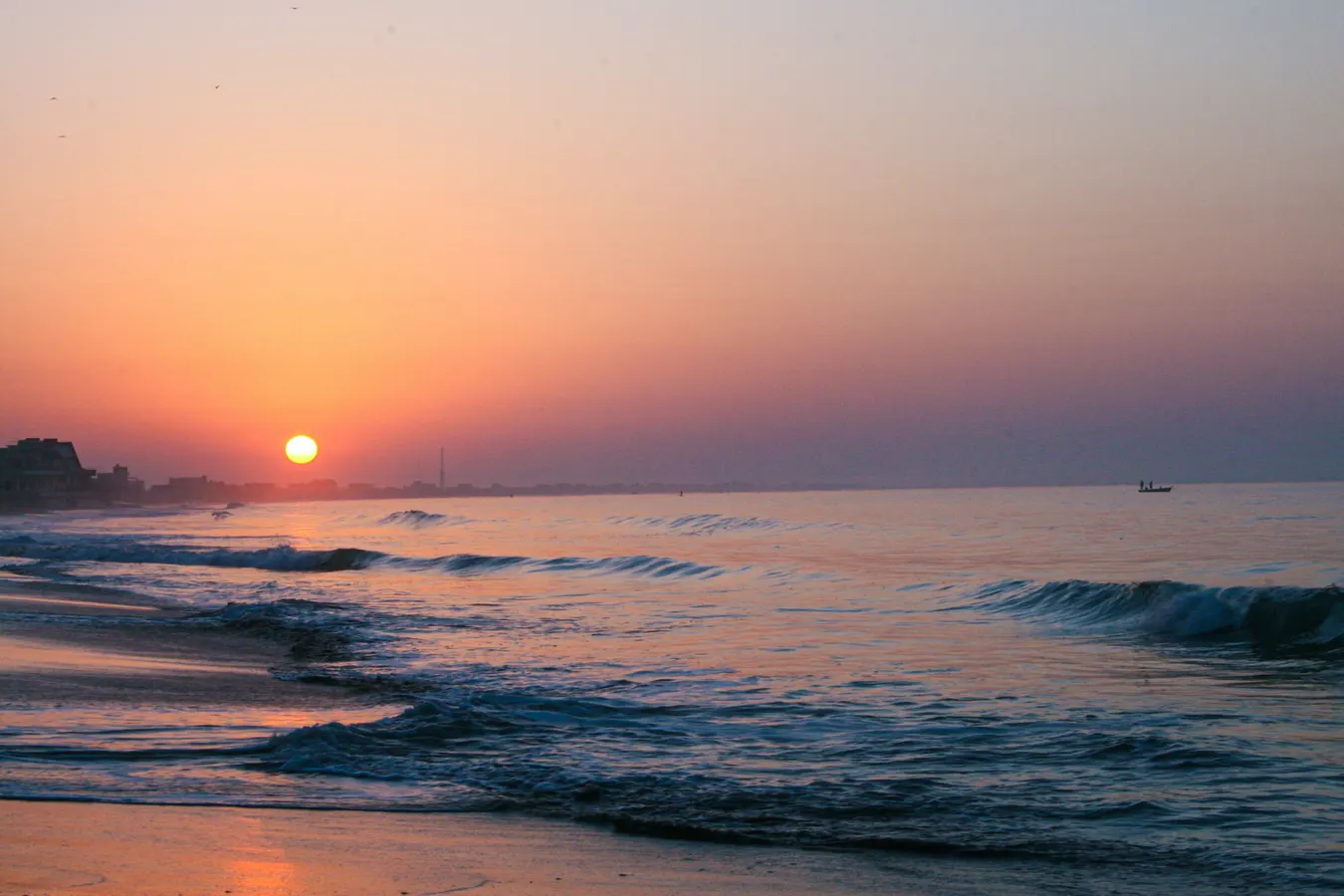
Top places in Karachi: Clifton Beach
The city of lights Karachi is also commonly known as the city of Quaid as it’s the birth and burial place of the Founder of Pakistan, Quaid e Azam Muhammad Ali Jinnah. It’s also formally known as the Jinnah Mausoleum. It contains the grave of the great leader Jinnah, along with the graves of his brave sister, Mader e Millat Fatima Jinnah, and the first Prime Minister, Liaquat Ali Khan.
The magnificent white marble building is an iconic symbol of Karachi. Official and Military ceremonies on each particular occasion are notable: 23 March, 14 August, 11 September, and 25 December. The tour to Karachi is incomplete without visiting the Tomb.
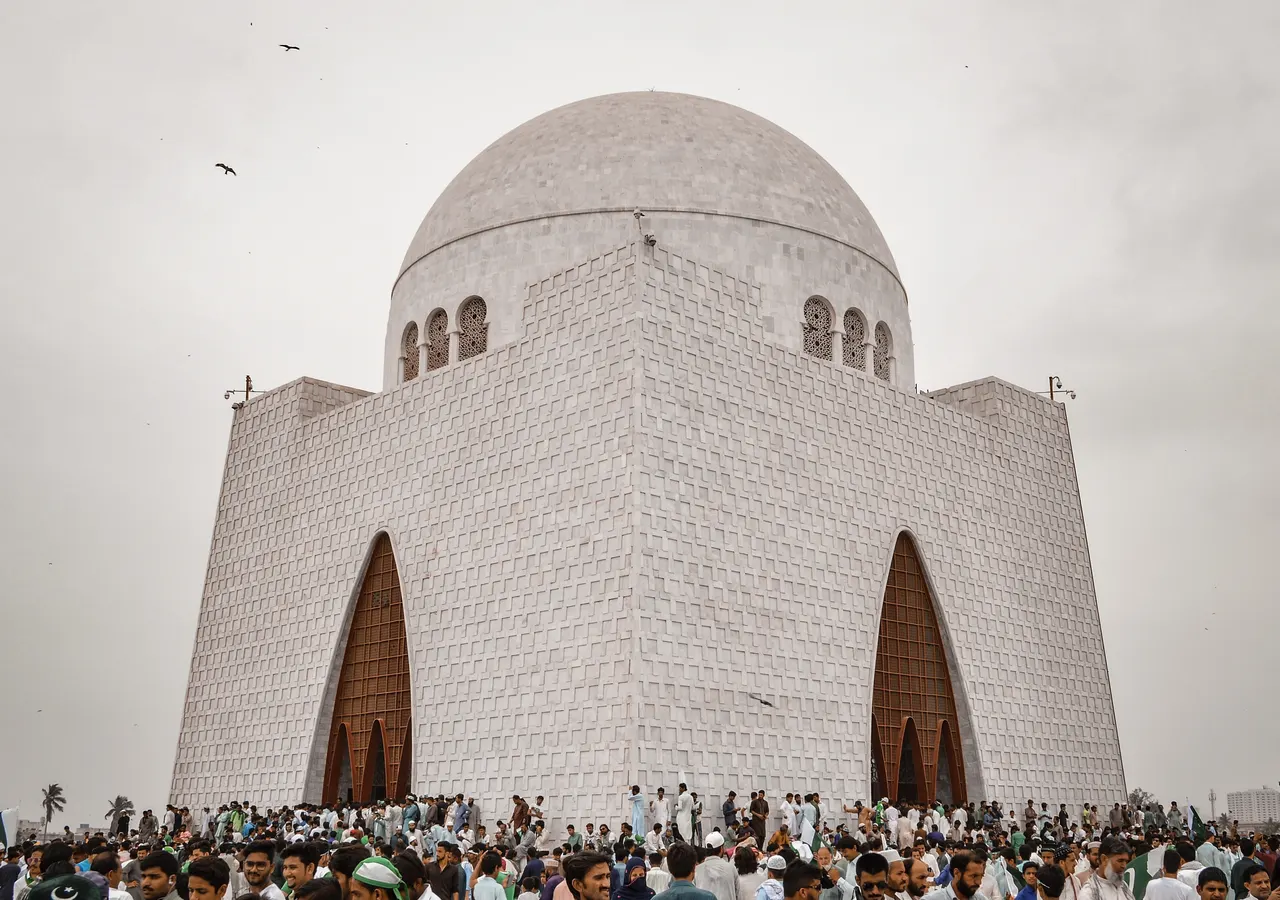
Tourist places in Karachi: Mizar e Quaid
The Palace was built in 1927 by a successful Marwari entrepreneur, Shiv Rattan Mohatta. Later, after Pakistan’s independence, the government acquired the building to house the Ministry of Foreign Affairs in 1947. After that, it became the residence of Jinnah’s sister Fatima Jinnah.
Many renovations were made after her sudden death; the interior is magnificent and luxurious in its style. Since 1999, it has been operating as a museum open to the public. The museum is devoted to the arts of Pakistan and presents a small collection of Queen Victoria and the soldiers of Raj.
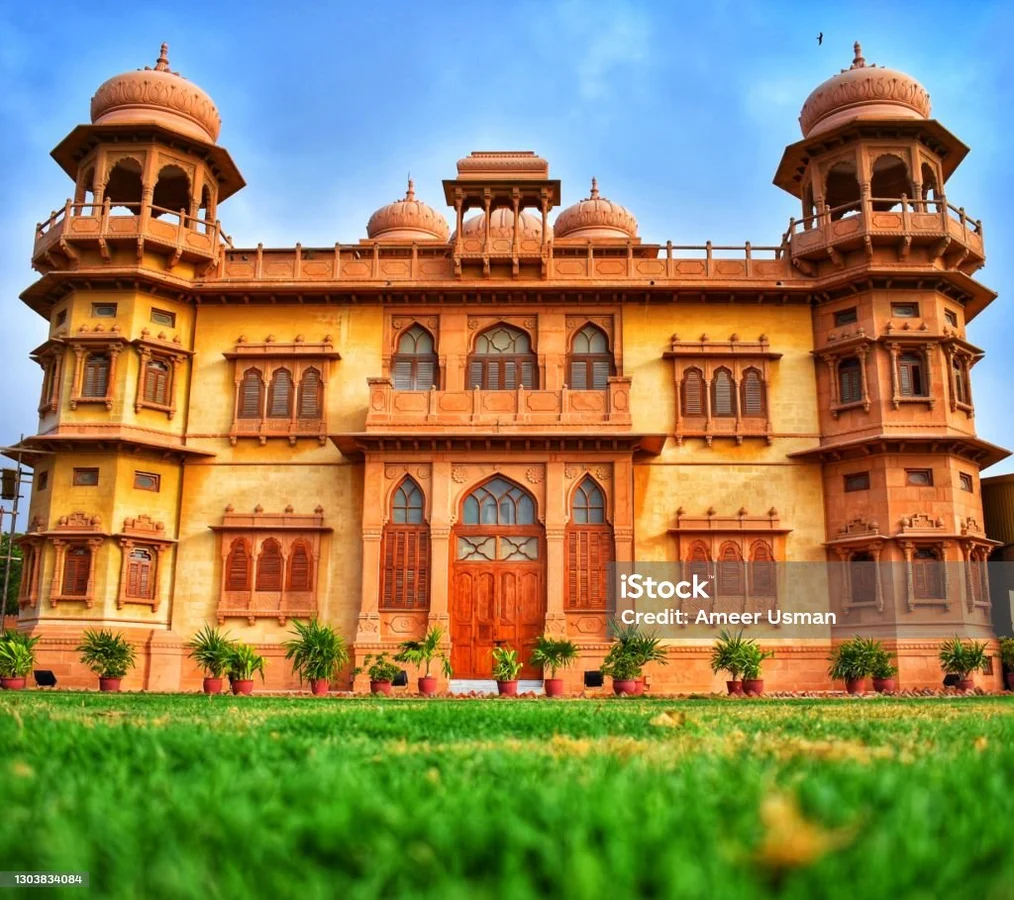
Tourist places in Karachi: Mohatta Palace
Pakistan’s well-maintained and well-organized safari park is inhabited by many animals, with two natural lakes and a ride chairlift. Lt. General Atiq Ur Rehman inaugurated the safari and fell in Gulshan e Iqbal in 1970. The park has many attractions for visitors, and it is an excellent place for a family picnic. Citizen enjoys quality time there.

Tourist places in Karachi: Safari Park Karachi
Also read: Best Parks in Karachi to visit with family
Considered the most iconic place in Karachi, Frere Hall is an important landmark. It is one of the most ancient buildings of the colonial era and is now the exhibition space and library. It’s strategically placed in the city’s center and is an imposing colonial building with high ceilings.
Legendary artist Sadequain decorated the canopy. It holds the famous Karachi Eat festival in January on its extensive grounds, Bagh-e-Jinnah, and contains a fabulous gallery. The architect of the building is a combination of British rule and local architectural elements.
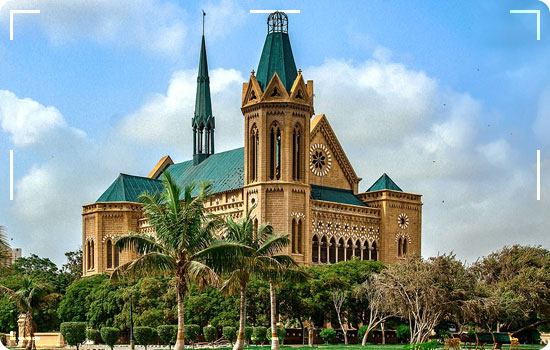
Places in Karachi: Frere Hall
Established in 1950, the National Museum of Pakistan collects, preserves, and studies various artifacts associated with Pakistani cultural heritage. The museum was relocated to its present address at Burnes Garden in 1970 with four galleries.
The primary objective of establishing the National Museum was to collect, preserve, study, and exhibit the records of the cultural history of Pakistan and to promote a learned insight into the personality of its people. Today, eleven galleries, including the Quran gallery, exhibit 300 identical copies of the Quran.
Other galleries showcase collections from the Indus & Gandhar civilizations, Islamic Art, and Pakistan’s political history. The museum also exhibits an auditorium and a 250-seat capacity.
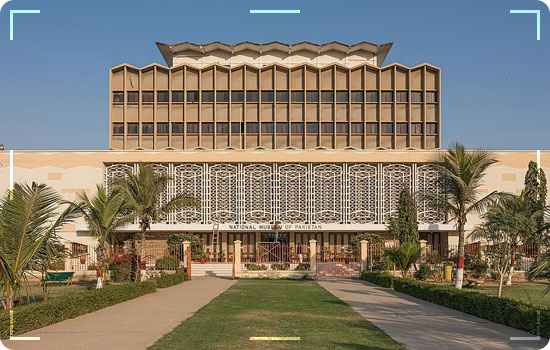
Places in Karachi: National-Museum-of-Pakistan
Running under the supervision of a naval force, it is the only naval museum in Karachi. The museum comprises six galleries and an auditorium that displays a wide range of maritime and naval heritage artifacts incorporated through attractive dioramas, relief sculptures, murals, miniature paintings, touch screen computers, taxidermy, and ancient weapons.
The museum also contains Daphne Class Submarine PNS Hangor (S131), the minesweeper, PNS Mujahid (M164), and the Breguet Atlantic aircraft offered by Majesty to Naval Chief in 1960. It is a great place to visit and explore the naval force and its achievements.
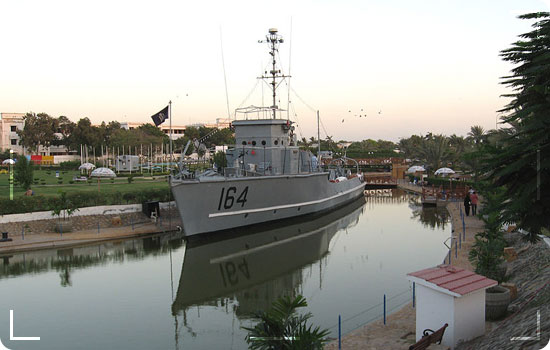
Places in Karachi: Pakistan Maritime Museum
Also Read: Sindh Winter Places for Family Tour
Port Grand is one of the most popular food courts in town. It is a recreational seaside area built along with the Native Jetty Bridge of the 19th century. It was renovated and opened for the public on 28 May 2011. The port grand connects the history with the present era.
The idea of bringing a new life to an old bridge is impressive. A range of the best restaurants in Karachi offer an exotic blend of Mexican, Italian, and Chinese food with a beautiful environment—one of the great places to visit in Karachi.
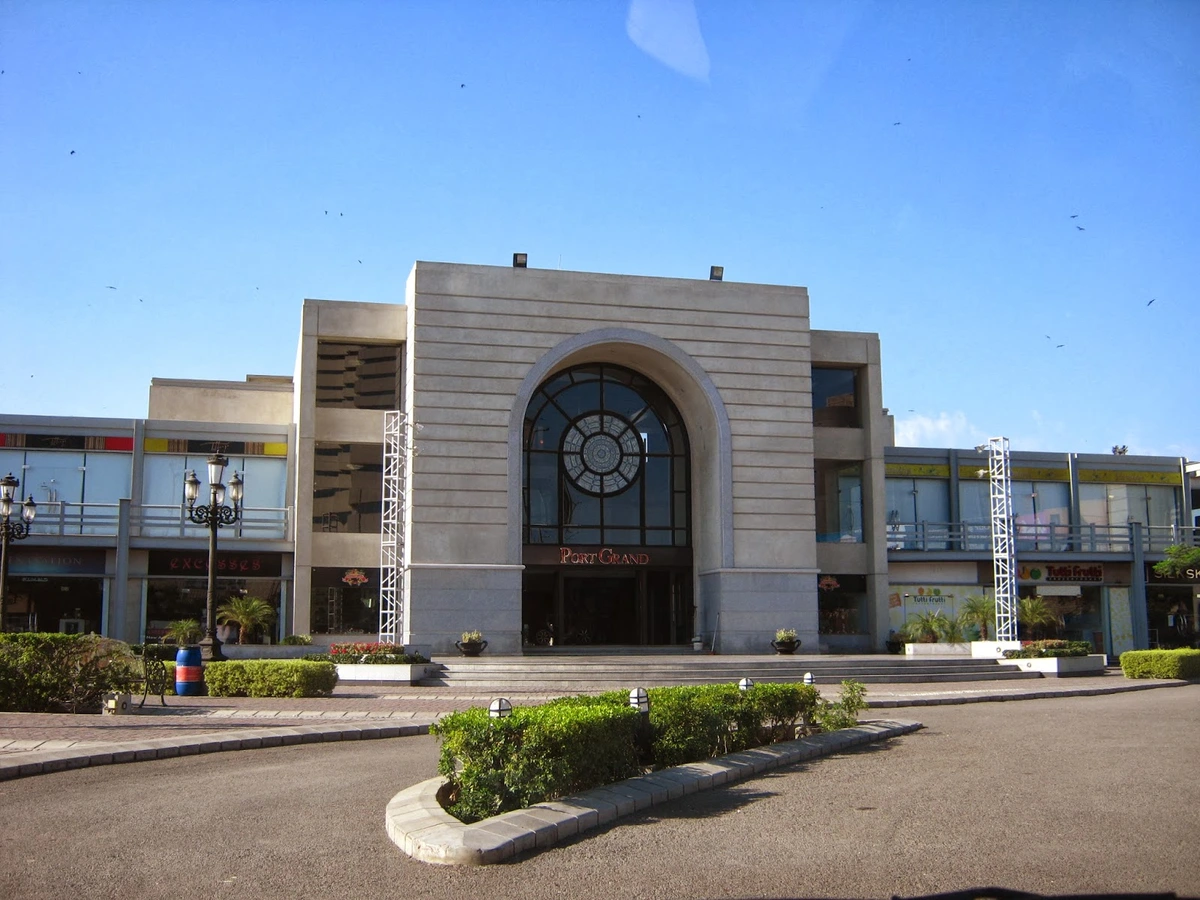
Tourist places in Karachi: Port Grand Karachi
The shrine of Abdullah Shah Ghazi was built on the city’s sandy shores almost ten centuries ago. The shrine has remained a center of attraction for people of different religions, sects, ethnicities, and sections of society. Not only religious people but also politicians.
The majestic saint connects his heritage to the last Prophet Hazrat Muhammad (SAW) and gains equal respect from Muslims and non-Muslims—many renovations were made in the best year to accommodate more and more devotees.
One of the most popular urban myths of Karachi is related to what is perhaps its largest Sufi shrine; for a long time, the saint’s many admirers have believed and still stick to it that the reason cyclones usually miss hitting Karachi is squarely due to the mystical power and presence of Shah Ghazi’s spirit that resides within the shrine.
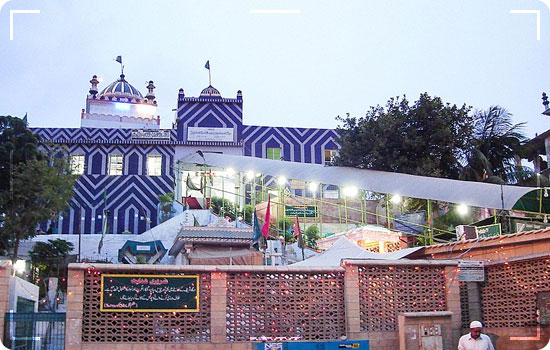
Places in Karachi: Shrine-of-Hazrat-Shah-Abdul-Ghazi
Related Post: Famous Shirnes in Pakistan
The most crowded shopping area of Karachi is the Empress Market and Road. The site has much historical significance; the building was constructed from 1884 to 1889 and is a well-chosen site visible from every corner of the city. The building was arranged around a courtyard, 130ft by 100ft, with four galleries, each 46ft wide.
The galleries provided accommodation for 280 shops and stall keepers. Karachi shares a large amount of the country’s total revenue through trade. Empress Market is the most popular shopping area for every generation and the richest to the poorest.
Since 2017, Saba Ghani has been serving as the talented and dedicated chief content writer for Pakistan Tour and Travel & EMHI Solutions. With her exceptional writing skills and in-depth knowledge of the travel industry, she has been instrumental in crafting engaging and informative content that captivates the audience. You can catch her at saba@pakistantourntravel.com or Twitter
12Years of relentless tourism Services in Pakistan